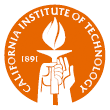Team:Caltech
From 2008.igem.org
(Difference between revisions)
| Line 10: | Line 10: | ||
|style="background:#ffffff"| | |style="background:#ffffff"| | ||
| + | See our wiki at [http://openwetware.org/wiki/IGEM:Caltech/2008 OpenWetWare] | ||
| + | |||
| + | ==The big idea== | ||
We aim to engineer a probiotic bacterium to improve its medical applications. Our work focuses on four main areas: (1) pathogen defense, either by expression of pathogen-specific bacteriophage or by targeted bursts of reactive oxygen species; (2) vitamin over-expression and delivery; (3) treatment of lactose intolerance, by preferentially metabolizing lactose and funneling it to vitamin production; and (4) regulation of these three treatment functions to produce subpopulations specialized for each function. | We aim to engineer a probiotic bacterium to improve its medical applications. Our work focuses on four main areas: (1) pathogen defense, either by expression of pathogen-specific bacteriophage or by targeted bursts of reactive oxygen species; (2) vitamin over-expression and delivery; (3) treatment of lactose intolerance, by preferentially metabolizing lactose and funneling it to vitamin production; and (4) regulation of these three treatment functions to produce subpopulations specialized for each function. | ||
| - | + | ==Why engineer gut microbes?== | |
| + | |||
| + | ===The large intestine: an ideal bioreactor=== | ||
| + | |||
| + | ===Probiotic bacteria and other natural examples=== | ||
| + | |||
| + | ===Nissle 1917: Probiotic, commercially available ''E. coli''=== | ||
| + | |||
| + | For more details, please see our [[Team:Caltech/Project|project]] page. | ||
|} | |} | ||
Revision as of 21:33, 21 August 2008
|
People
|
{{{Content}}} |
</div>
|
See our wiki at OpenWetWare The big ideaWe aim to engineer a probiotic bacterium to improve its medical applications. Our work focuses on four main areas: (1) pathogen defense, either by expression of pathogen-specific bacteriophage or by targeted bursts of reactive oxygen species; (2) vitamin over-expression and delivery; (3) treatment of lactose intolerance, by preferentially metabolizing lactose and funneling it to vitamin production; and (4) regulation of these three treatment functions to produce subpopulations specialized for each function. Why engineer gut microbes?The large intestine: an ideal bioreactorProbiotic bacteria and other natural examplesNissle 1917: Probiotic, commercially available E. coliFor more details, please see our project page. |
 "
"
